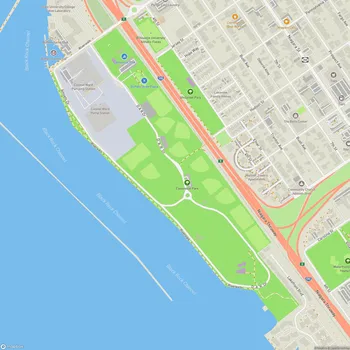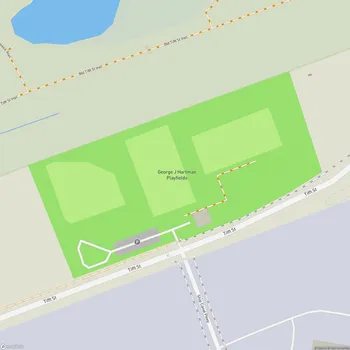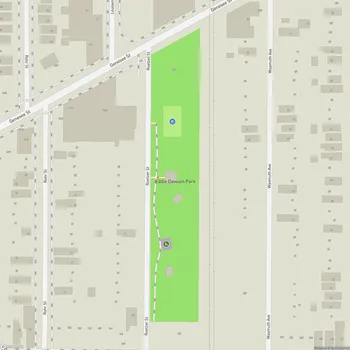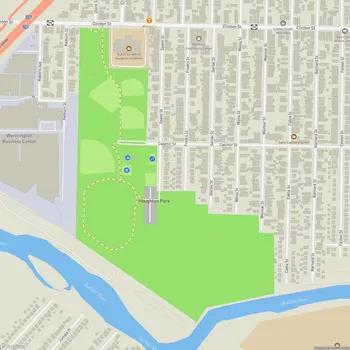Delaware Park
Interactive Park Map
About Delaware Park
A Masterpiece of Landscape Design
Delaware Park emerged from the creative mind of Frederick Law Olmsted between 1868 and 1870. Stretching across 350 acres, locals often call it Buffalo's "Central Park" - though Olmsted himself simply named it "The Park" when he first envisioned this urban oasis.
The park naturally divides into two distinct personalities: the sprawling 243-acre Meadow Park on the east side and the more intimate 133-acre Water Park to the west. The Water Park's centerpiece is Hoyt Lake (originally called Gala Water), created by damming Scajaquada Creek. Back in the day, the vast Meadow Park was actually maintained by grazing sheep - nature's lawnmowers at work!
Where History and Culture Converge
In 1901, Delaware Park hosted the Pan-American Exposition, a world's fair that left a lasting architectural legacy including the Albright-Knox Art Gallery (now reborn as the AKG Art Museum) and the Buffalo History Museum.
The 1960s brought change when the Scajaquada Expressway cut through the park in 1962 - a decision that remains controversial, with ongoing conversations about potentially removing or modifying this concrete divider.
During summer evenings, the park transforms into an open-air theater with Shakespeare in the Park performances. There's something magical about experiencing the Bard's works under the stars, surrounded by Olmsted's carefully crafted landscape.
What You'll Find Today
Delaware Park represents Buffalo's backyard - a place for quiet contemplation and active recreation alike.
The Buffalo Zoo, a park resident since 1875, remains one of the most popular attractions. Meanwhile, the historic Marcy Casino, built for the 1901 exposition, continues to host everything from weddings to community gatherings.
For a bit of whimsy, head to Hoyt Lake where you can rent pink flamingo pedal boats to explore the water at your own pace. Plant enthusiasts shouldn't miss the Rose Garden near the lake - when in bloom, it's a sensory delight of colors and fragrances.
Get Moving
Active types will find plenty to love about Delaware Park. The Meadow side houses a public golf course, while tennis courts, basketball courts, and soccer fields dot the landscape, serving everyone from serious athletes to weekend warriors.
The paved loop circling the park has become a favorite for walkers, joggers, cyclists, and rollerbladers looking to get their exercise fix in a scenic setting. If you're into outdoor workouts, keep an eye out for the fitness equipment stations strategically placed along some paths.
Dog owners, rejoice! The park is incredibly dog-friendly, with generous open spaces where four-legged friends can stretch their legs and socialize.
Family-Friendly Features
Kids will gravitate toward the several playgrounds scattered throughout the park. When hunger strikes, numerous picnic areas with tables make it easy to refuel with an outdoor meal.
You'll discover restroom facilities conveniently located within the park, including both permanent structures and seasonal portable options during the busier months.
Preserving Olmsted's Vision
In recent years, the Buffalo Olmsted Parks Conservancy has taken stewardship of Delaware Park and other Olmsted-designed green spaces in the city. Their efforts have breathed new life into these historic landscapes.
The park's historical significance was officially recognized in 1982 when it was added to the National Register of Historic Places as part of Buffalo's Olmsted parks and parkways system. It reflects Olmsted's democratic vision of creating green spaces accessible to all city residents.
Don't miss the tranquil Japanese Garden adjacent to the Buffalo History Museum, which puts on a spectacular show during cherry blossom season. Art enthusiasts might be surprised to discover a replica statue of David by Michelangelo (one of only three cast from the original marble) standing near the pedestrian bridge over the expressway - an unexpected cultural treasure in this urban paradise.
All Features & Facilities
Active Recreation
Nature & Wildlife
Water Features & Activities
Visitor Services
Food & Gathering
Photo Gallery
ParkMagnet Score
Top Park
Park Size
Opening Hours
Weather
Top Restaurants Near Delaware Park
Parkside Meadow
699 feet2 Russell St, Buffalo, NY 14214
Cozy American tavern featuring Buffalo memorabilia, weekly specials, and local beers on tap.
Cornelia
0.3 miles1285 Elmwood Ave, Buffalo, NY 14222
Upscale dining destination featuring creative cuisine with vegan options and talented culinary artistry in an elegant setting.
Oliver's Restaurant
0.3 miles2095 Delaware Ave, Buffalo, NY 14216
Sophisticated American restaurant featuring a circular bar, extensive wine selection, and upscale dining atmosphere.
Top Hotels Near Delaware Park
The Richardson Hotel
0.6 miles444 Forest Ave, Buffalo, NY 14213
Historic art deco hotel offering spacious rooms with character in a beautifully restored Buffalo landmark.
The Foundry Suites
0.7 miles1738 Elmwood Ave, Buffalo, NY 14207
Industrial-chic boutique hotel featuring spacious suites, modern amenities, and a contemporary bar.




